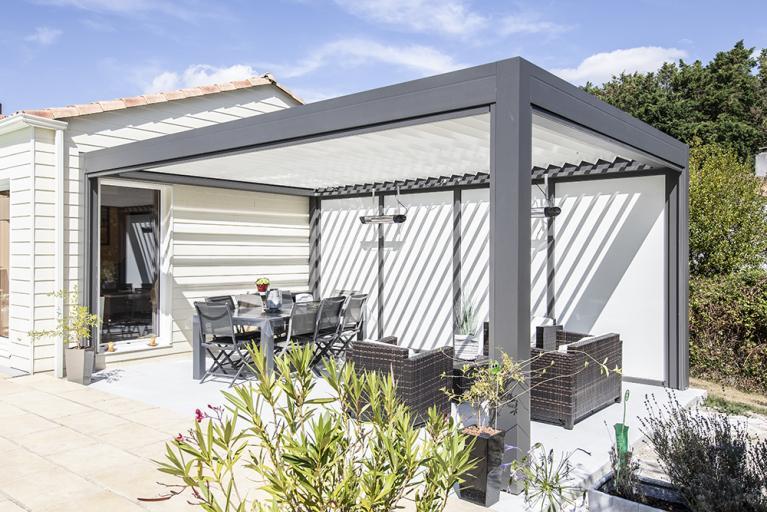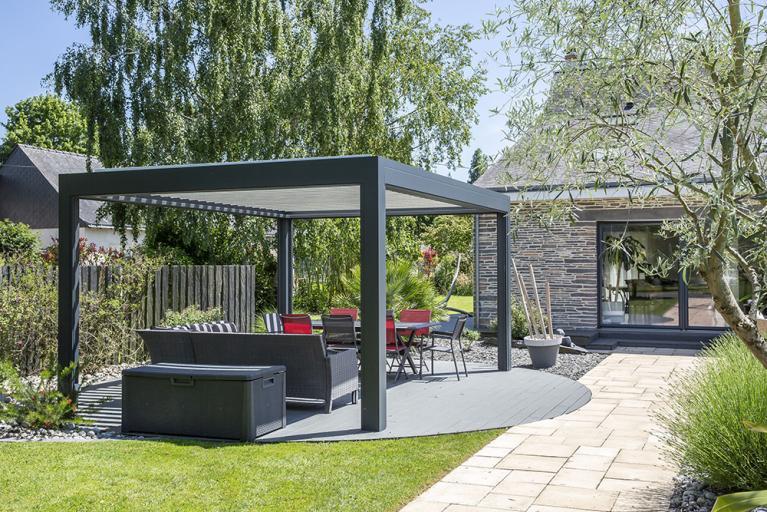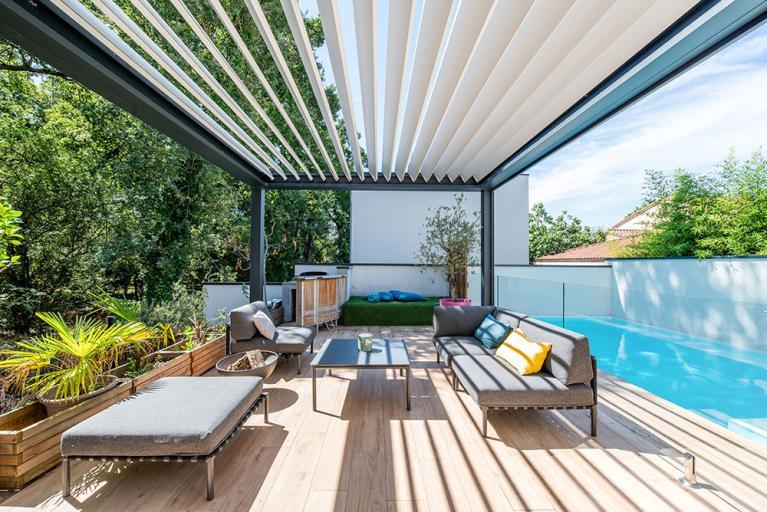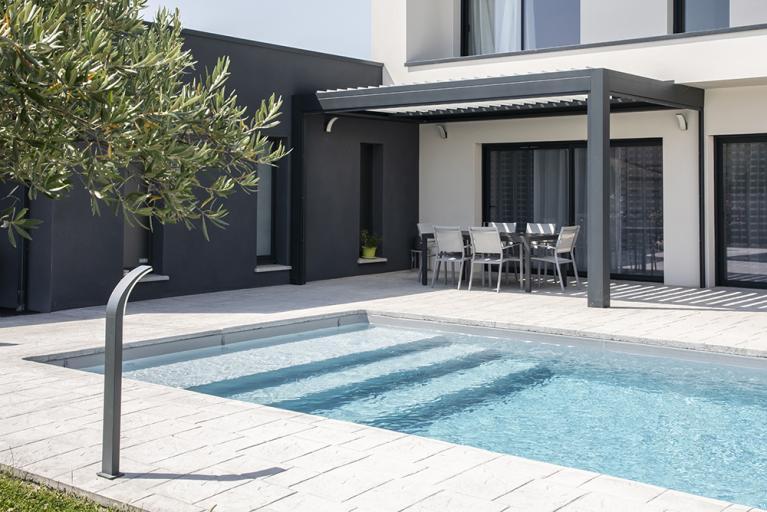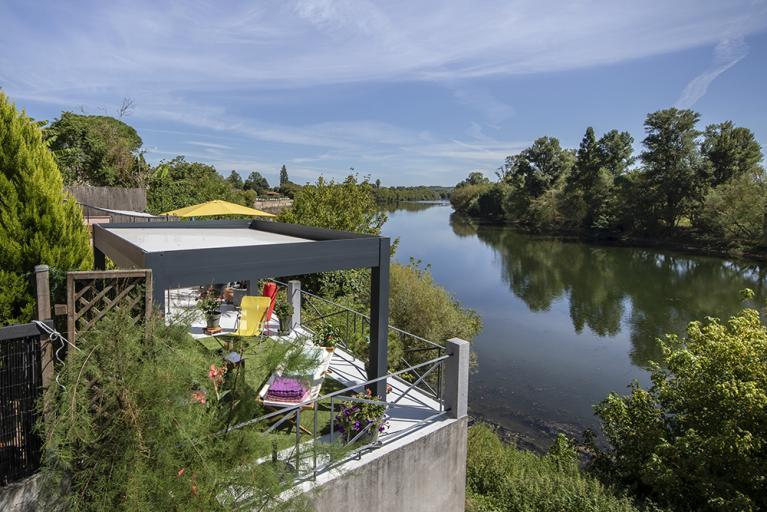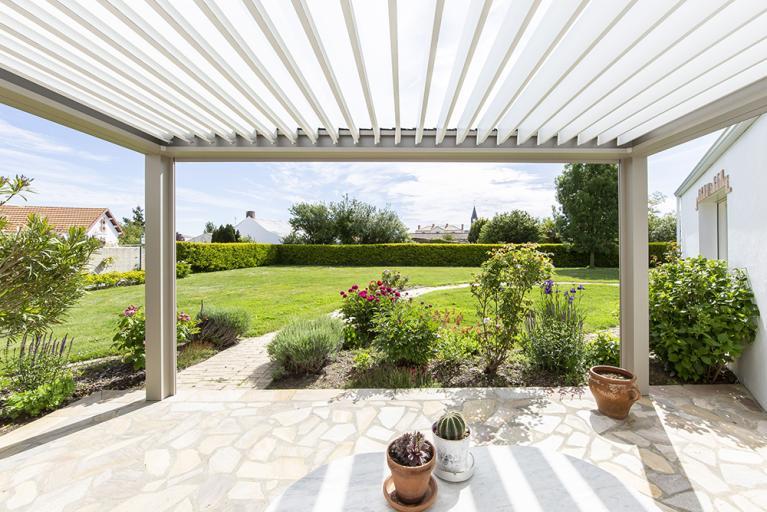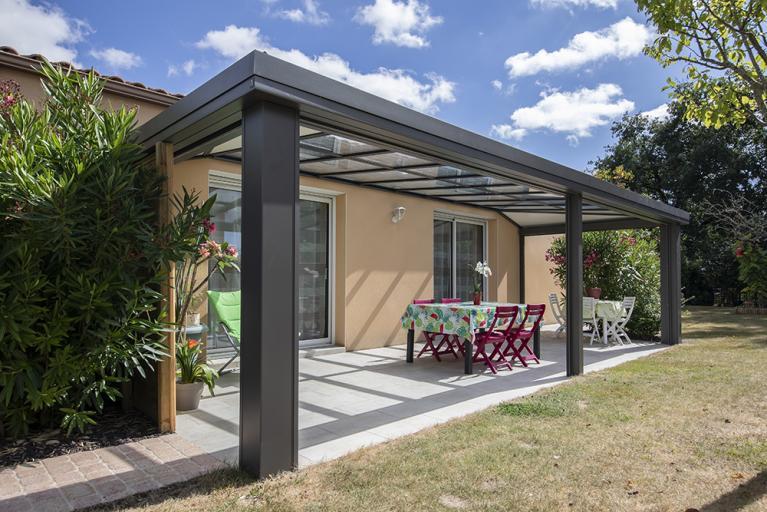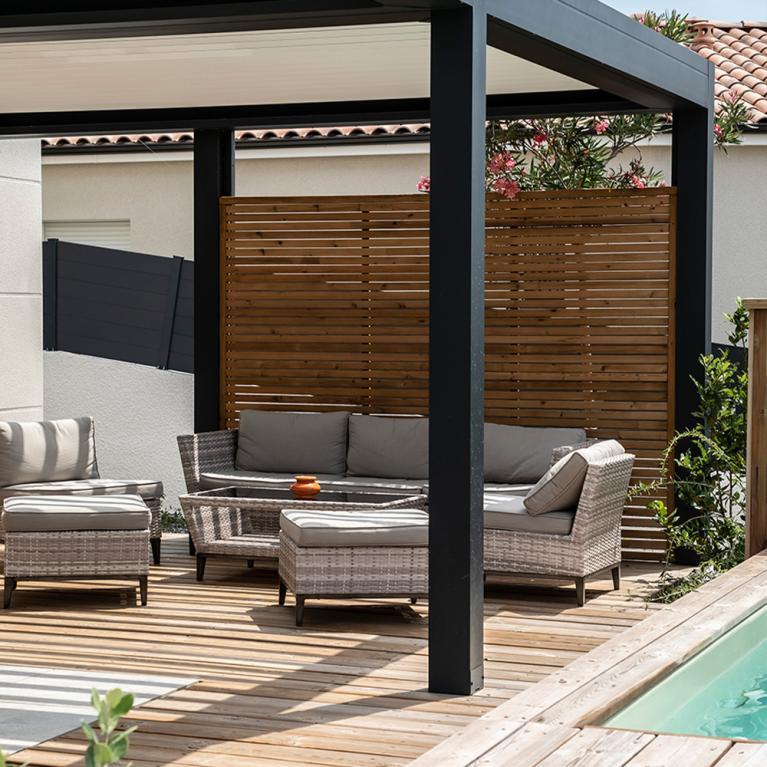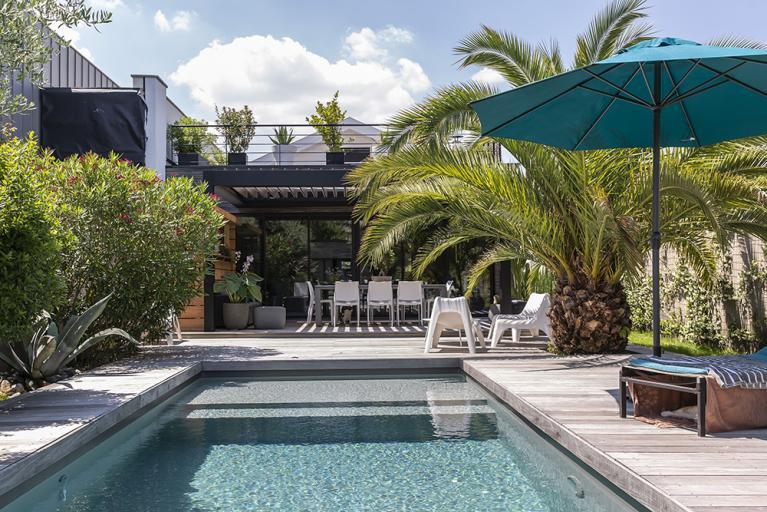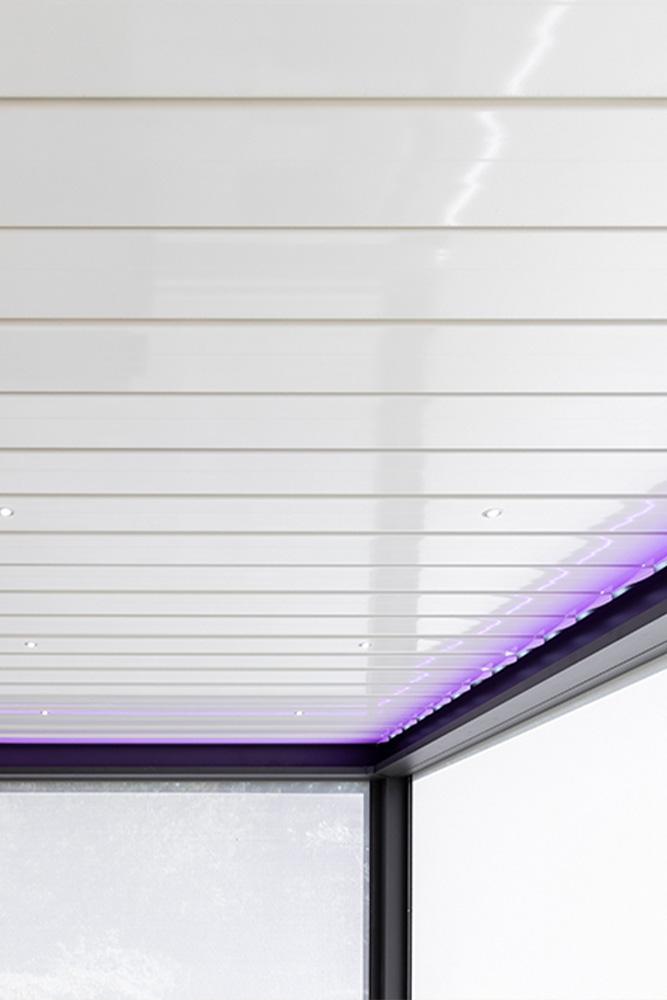What is a freestanding pergola?
Freestanding, lean-to, bioclimatic, suspended pergola... Deciding to have a pergola installed requires a certain amount of investment. It changes part of your property and adds character. That's why it's vital to make the right choice from the outset! There are many different types of pergola on the market, and it can be confusing. In this article, we take a look at the self-supporting pergola and provide an overview of the different models.
The features of a freestanding pergola
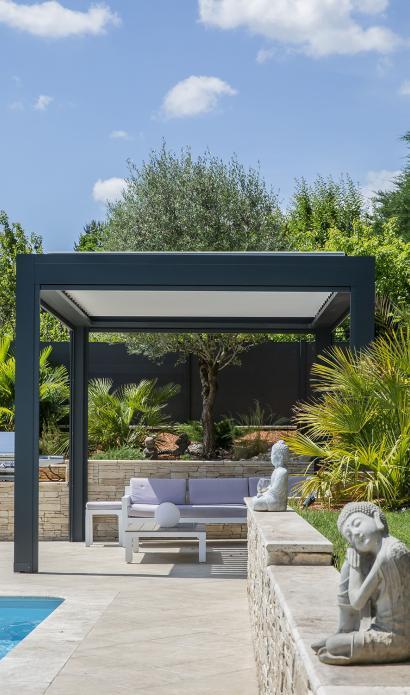
The self-supporting pergola is also known as a freestanding or island pergola.
Supported by four legs, it is completely independent of your house. Unlike lean-to pergolas, the islands are not attached to the house, so won't damage the front walls. And it can be installed anywhere you like. As the pillars are firmly fixed in the ground, the choice of location needs to be carefully considered.
Placed on your terrace, the freestanding pergola can serve as a transitional piece between your home and garden. A host of equipment and options can be added to turn it into a living space. You can make the most of it in mid-season, when it's not so cold but not yet warm enough to enjoy the outdoors to the full.
Characteristics
 4 legs
4 legs
 Non-backed
Non-backed
 Adjustable slats
Adjustable slats
 Fixed roof
Fixed roof
A modern, fully-equipped freestanding pergola will be beneficial all year round. It becomes a contemporary patio. If you choose to install your freestanding pergola in your garden, you'll create an island of conviviality. You'll create an intimate atmosphere of relaxation and well-being in your green space.
Freestanding arbours are usually made of aluminium. This material is durable and easy to maintain. Their roofs are usually made of double glazing, laminated glass, alveolar polycarbonate or aluminium sandwich panels for optimum insulation. The slats that make up the roof of bioclimatic self-supporting pergolas are special, and we'll talk about them in the second part of this article. It can be fitted with sunbreakers, motorised blinds, a sunroof or LED lighting.
The different types of pergola
Like their lean-to counterparts, freestanding pergolas can be classic or bioclimatic. First, let's look at the difference between a lean-to (or wall-mounted) pergola and a freestanding pergola. Then we'll look at the special features of a bioclimatic pergola.
An update on bioclimatic pergolas
Whether it's an island or a lean-to, you can choose to install a classic or bioclimatic pergola. In both cases, a state-of-the-art pergola comes with a range of options to help you make the most of your new home. Bioclimatic architecture is a concept that uses natural elements to our advantage. The slats on the roofs of bioclimatic pergolas are adjustable. By opening them to different degrees, you can tame the wind and provide welcome ventilation on hot days. By adapting to climatic conditions, bad weather will no longer be a worry! By installing a self-supporting bioclimatic pergola, you can continue to enjoy your garden furniture all year round!
Find out more about bioclimatic pergolas?
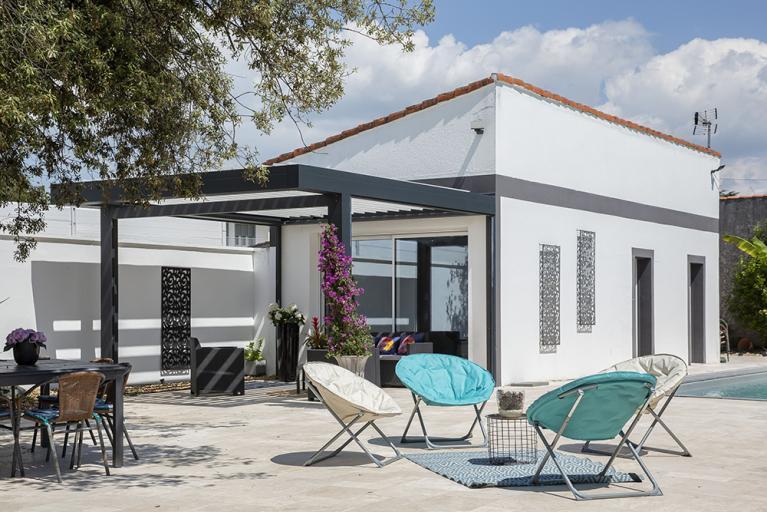
Read all the articles in the magazine
You have a project?
Would you like a personalised 3D study and a free quotation? Contact us by clicking below.
AKENA is...
Over 40 years of experience
Founded in 1981 by one man, we now have more than 500 employees dedicated to making your project a success.
Made in France
A historic site and two factories covering more than 25,000 m² in Dompierre-sur-Yon in the Vendée region (85)
Innovative and tailor-made products
At AKENA, we are brimming with new ideas to improve and enhance our products.
The European leader in conservatories, pergolas...
But not only! AKENA also offers a complete range of carports and pool houses.
